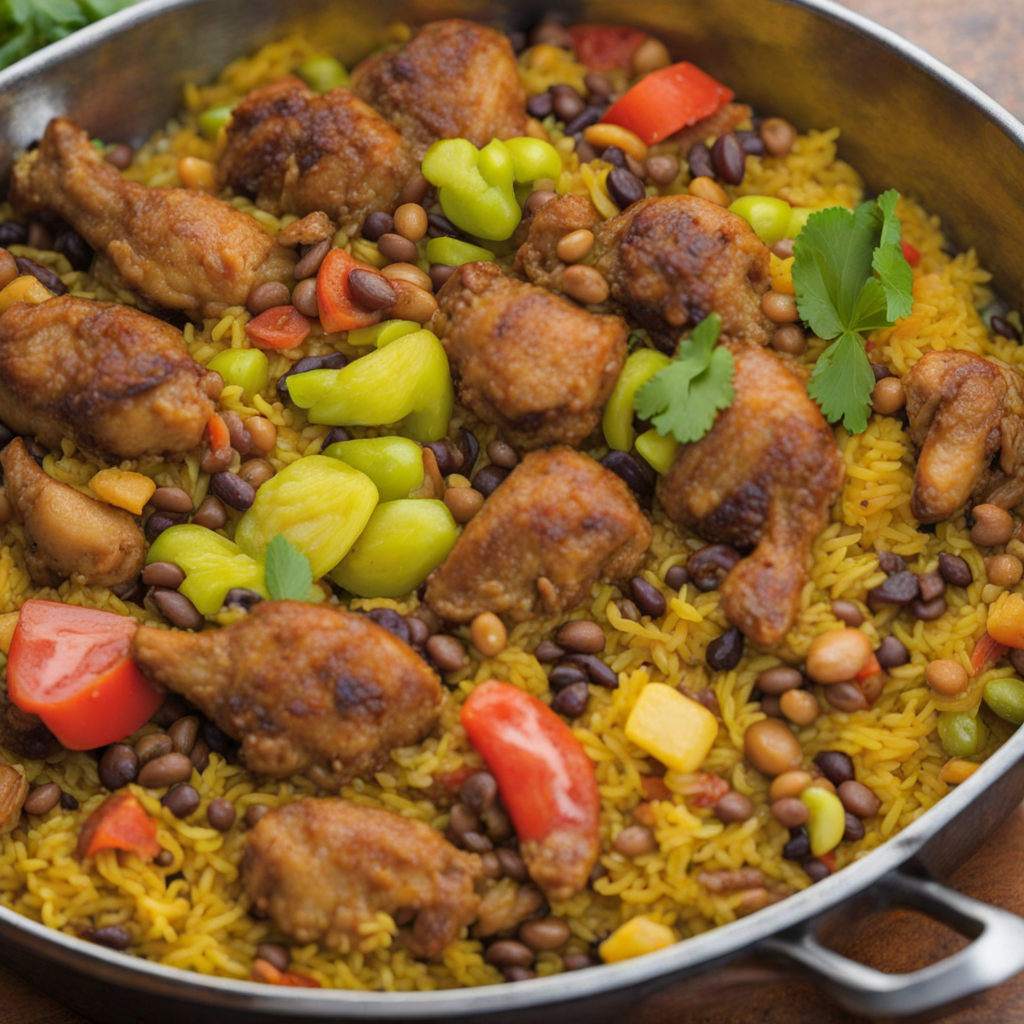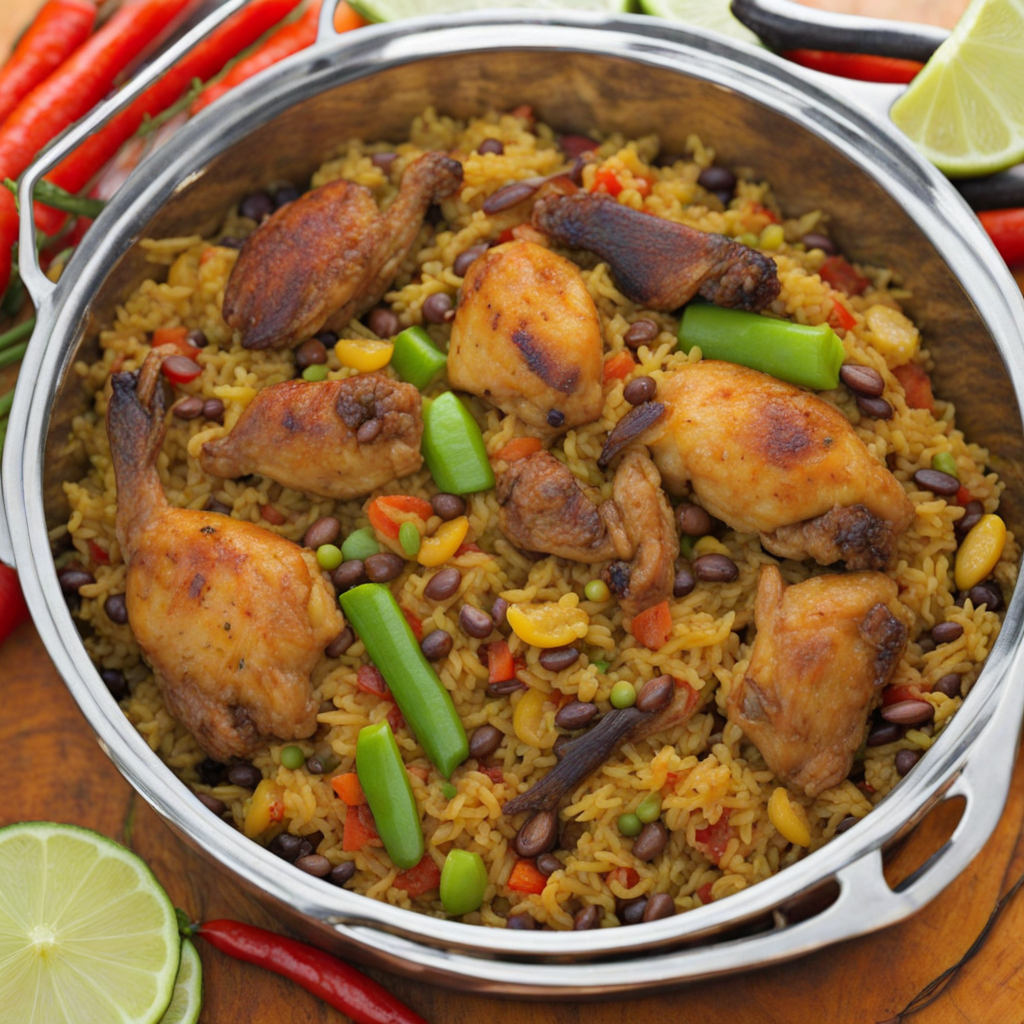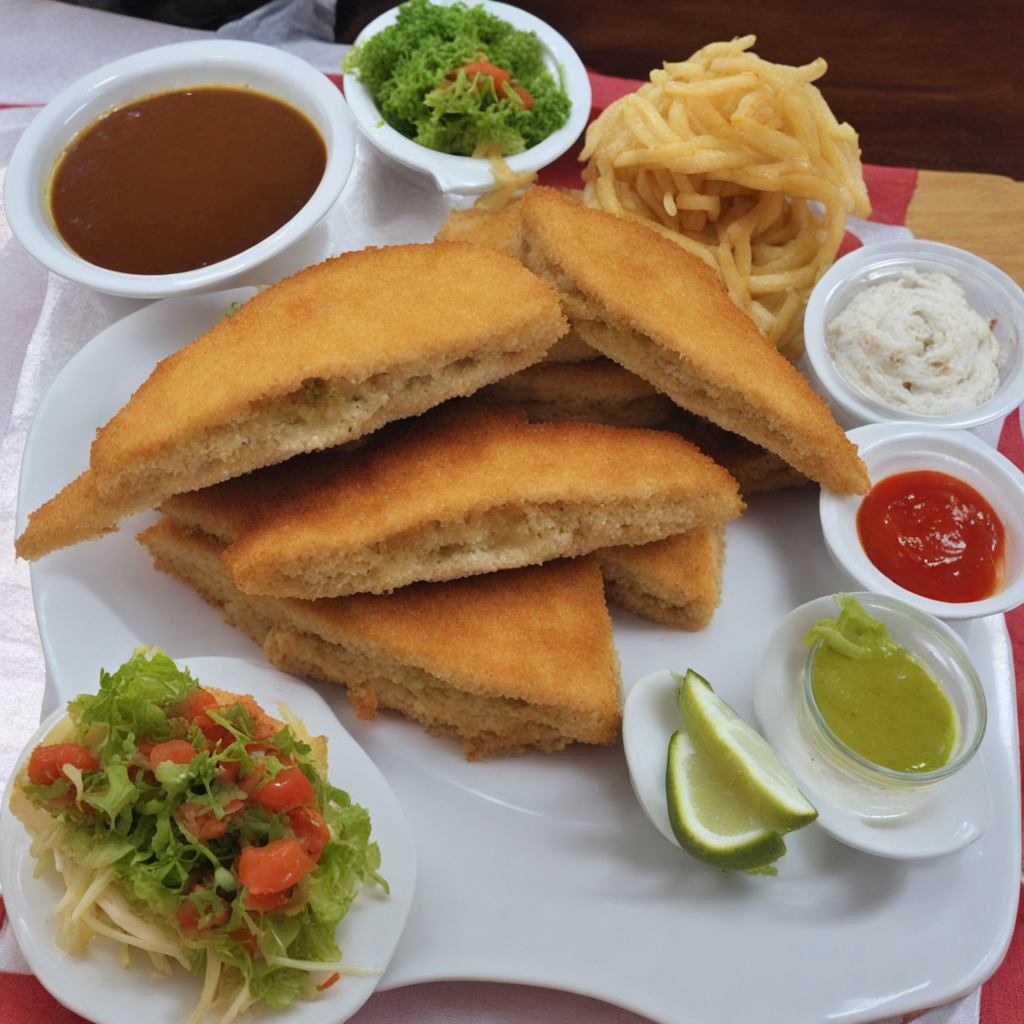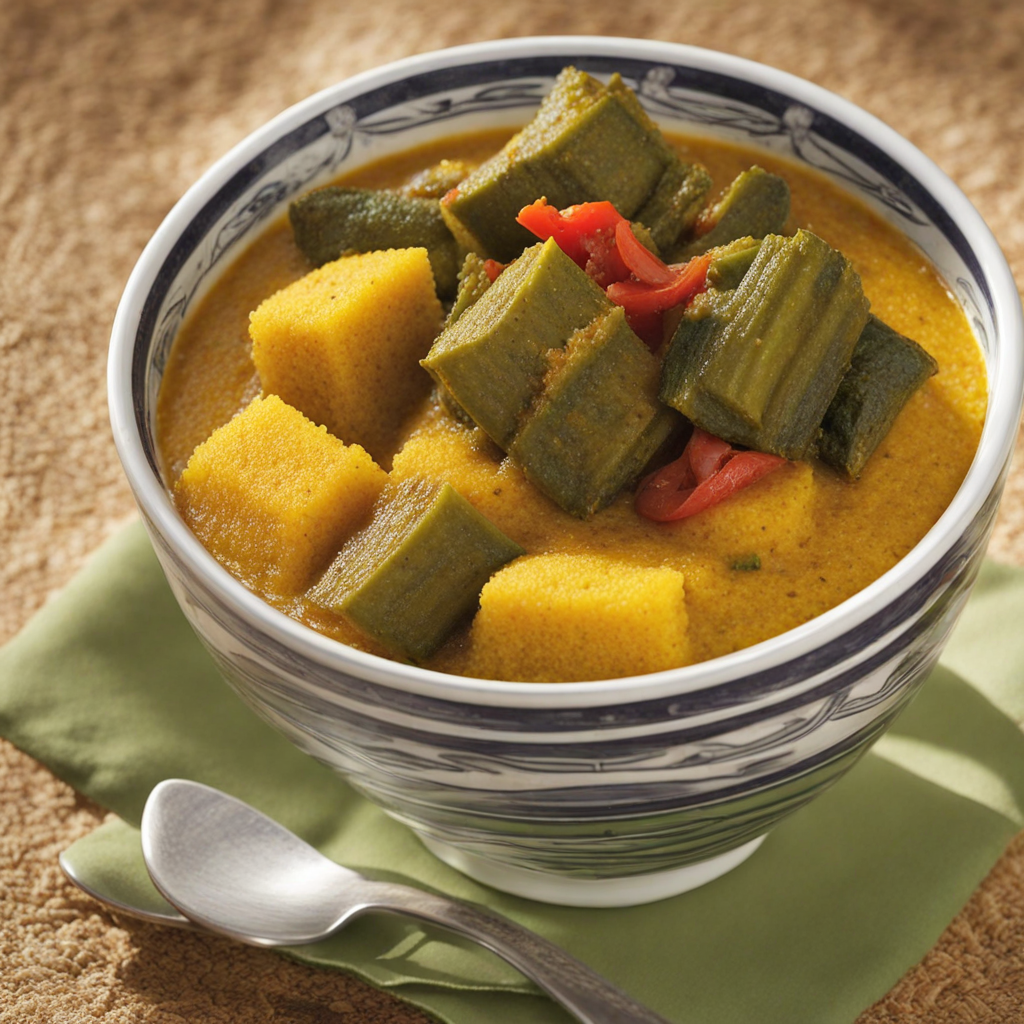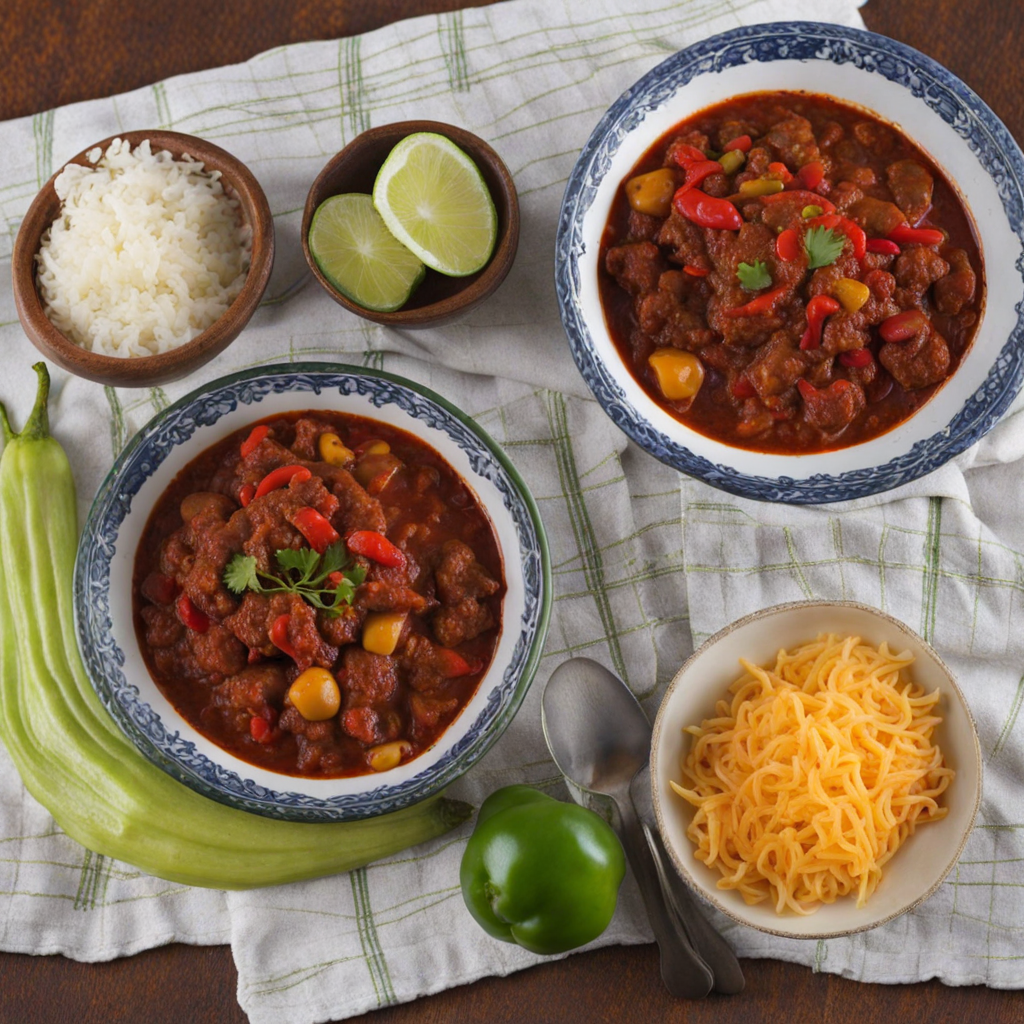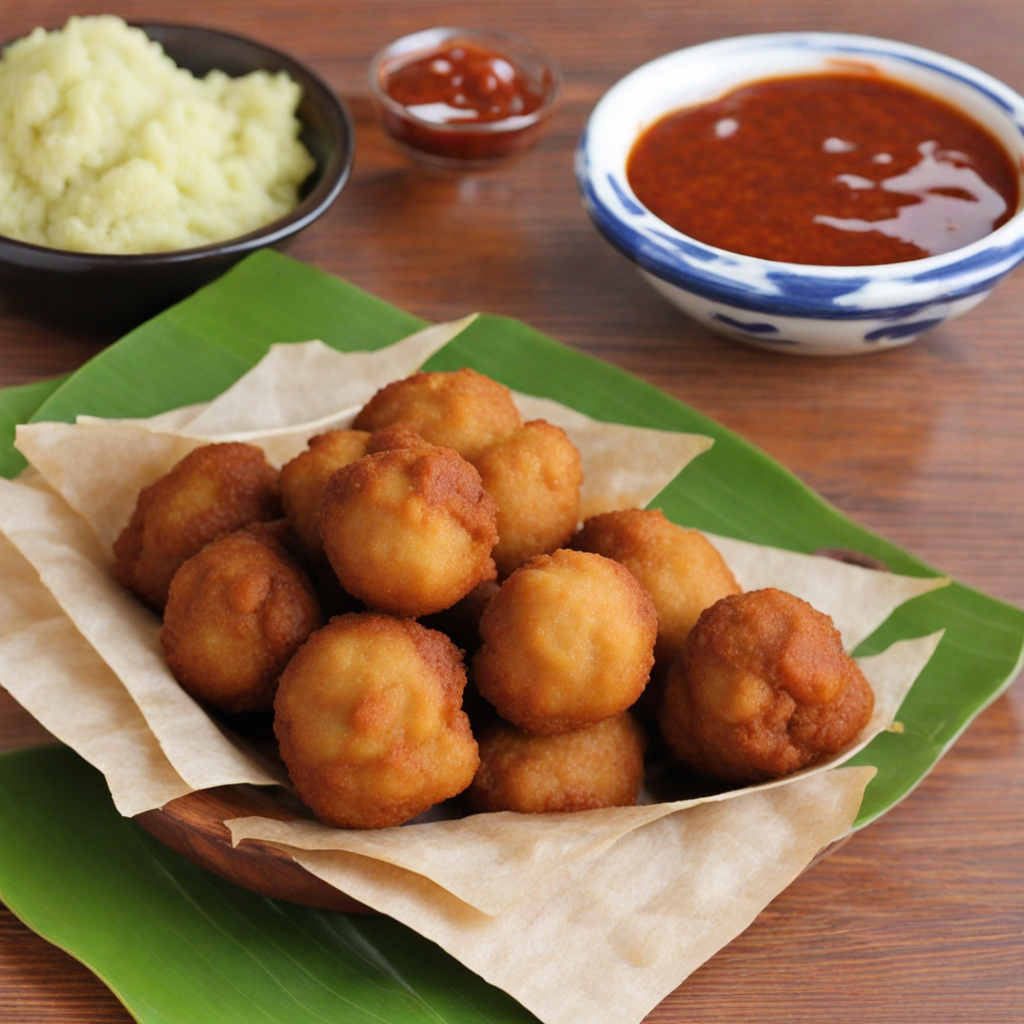Pelau
Pelau is a vibrant and hearty one-pot dish that embodies the rich culinary heritage of Trinidad and Tobago. This flavorful rice dish is typically made with a combination of meat—such as chicken, beef, or duck—cooked along with pigeon peas and a medley of aromatic spices. What sets Pelau apart is the unique technique of browning the meat, often using brown sugar to create a caramelized crust that deepens the flavor profile. As the dish simmers, the rice absorbs the savory juices, resulting in a delightful harmony of textures and tastes that captivates the palate. In addition to the protein and pigeon peas, Pelau is often enriched with a variety of vegetables, including bell peppers, onions, and carrots, which add color and freshness to the dish. The incorporation of coconut milk is another signature element, lending a creamy richness that balances the spices. The combination of thyme, bay leaves, and other seasonings infuses the dish with an aromatic depth, while the slight heat from Scotch bonnet peppers gives it a distinctive kick. Each bite of Pelau encapsulates the essence of Caribbean cuisine, where warmth and hospitality are reflected in the food. Serving Pelau is often a communal experience, bringing family and friends together around the table. It is frequently accompanied by sides such as salad or fried plantains, which complement its richness. As you delve into a plate of Pelau, you’ll discover a tapestry of flavors that tells the story of Trinidad and Tobago—where each ingredient is carefully chosen to create a dish that is not only satisfying but also a celebration of culture and tradition.
How It Became This Dish
The History of Pelau: A Culinary Journey Through Trinidad and Tobago Pelau, a delightful one-pot dish from Trinidad and Tobago, encapsulates the rich tapestry of cultures, traditions, and flavors that define the Caribbean archipelago. As a symbol of community and festivity, Pelau is more than just a meal; it is a reflection of the island's history, its people, and their ability to adapt and innovate culinary practices over time. #### Origins: A Melting Pot of Influences The origins of Pelau can be traced back to the 19th century, a period marked by significant social and cultural upheaval in Trinidad and Tobago. The islands were a hotspot for various waves of migration, with indigenous peoples, enslaved Africans, indentured laborers from India, and European colonizers all contributing to the culinary landscape. The dish's primary components—rice, peas, and meat—are universally found in many cultures, yet Pelau represents a unique amalgamation of these influences. The base of the dish, rice, is a staple food in many Caribbean cultures, while pigeon peas (or black-eyed peas) provide protein and texture. The addition of meat, often chicken or beef, showcases the African influence, where stewing and slow-cooking were prevalent cooking methods. The name “Pelau” itself is believed to be derived from the French word “pilaf,” referring to a rice dish cooked in a seasoned broth. The French colonialists, who once ruled Trinidad and Tobago, left a culinary imprint that remains evident today. However, the true beauty of Pelau lies in its adaptability; each community has put its unique spin on the dish, resulting in various regional variations. #### Cultural Significance: A Dish for All Occasions Pelau is more than just a meal; it is a cultural emblem that brings people together. Traditionally cooked for festive occasions, family gatherings, and community celebrations, it fosters a sense of belonging and togetherness. The dish is often prepared in large quantities, making it perfect for feeding a crowd. In Trinidadian culture, Pelau is synonymous with ‘lime’—a term used to describe social gatherings. Whether it’s a family reunion, a holiday celebration, or a casual get-together, Pelau is often at the center of the table, symbolizing hospitality and camaraderie. Its preparation can be a communal activity, with family members coming together to chop, stir, and share stories, further cementing its role in fostering social bonds. #### Development Over Time: From Tradition to Modernity As Trinidad and Tobago's culinary landscape evolved, so too did Pelau. While the traditional recipe remains popular, modern interpretations have emerged, reflecting contemporary tastes and dietary preferences. Today, chefs and home cooks alike experiment with various proteins, including vegetarian and vegan alternatives, to accommodate dietary restrictions while preserving the dish's essence. The cooking method of Pelau has also evolved. Traditionally, the dish was cooked over an open flame, allowing for a distinctive smoky flavor that many still cherish. In contrast, modern kitchens often utilize stovetops and electric burners, which, while convenient, may alter the dish's characteristic taste. Nonetheless, the core ingredients and the spirit of togetherness remain intact. Regional variations of Pelau have also surfaced, influenced by the immigrant communities that have settled in Trinidad and Tobago. The East Indian population, for instance, has introduced spices and methods that have enriched the dish further. The inclusion of coconut milk, for example, adds a creamy texture and subtle sweetness, making it a beloved adaptation among many. Pelau has also found its way into Trinidadian street food culture. Food vendors and roadside stalls offer their unique takes on Pelau, often served with fried plantains or coleslaw, making it an accessible and beloved dish for locals and tourists alike. This transition into street food has helped sustain Pelau's popularity, ensuring that it remains a staple in the Caribbean diet. #### The Global Stage: Pelau Beyond Trinidad and Tobago In recent years, Pelau has gained recognition beyond Trinidad and Tobago, becoming a popular dish at Caribbean festivals and restaurants worldwide. As the diaspora continues to grow, Trinidadian cuisine, including Pelau, has found a place on international menus, showcasing the islands' vibrant culinary heritage. The globalization of cuisine means that Pelau is now being reimagined by chefs who blend traditional techniques with modern culinary practices. Fusion versions of Pelau, incorporating elements from Asian, Latin American, and Mediterranean cuisines, are becoming increasingly popular, showcasing the dish’s versatility and its ability to transcend cultural boundaries. #### Conclusion: A Living Tradition Pelau is a dish steeped in history and culture, representing the diverse influences that have shaped Trinidad and Tobago over centuries. Its evolution—from a communal meal cooked over an open flame to a dish enjoyed in homes and restaurants around the world—demonstrates the resilience and adaptability of culinary traditions. As Trinidadians continue to celebrate Pelau, they honor their ancestors' legacies while embracing innovation and change. Whether enjoyed at a family gathering, a street festival, or a fine dining restaurant, Pelau remains a testament to the culinary richness of the Caribbean and the enduring spirit of its people. In every bite, one can taste not just a delicious meal, but also a story of resilience, community, and cultural pride.
You may like
Discover local flavors from Trinidad And Tobago


